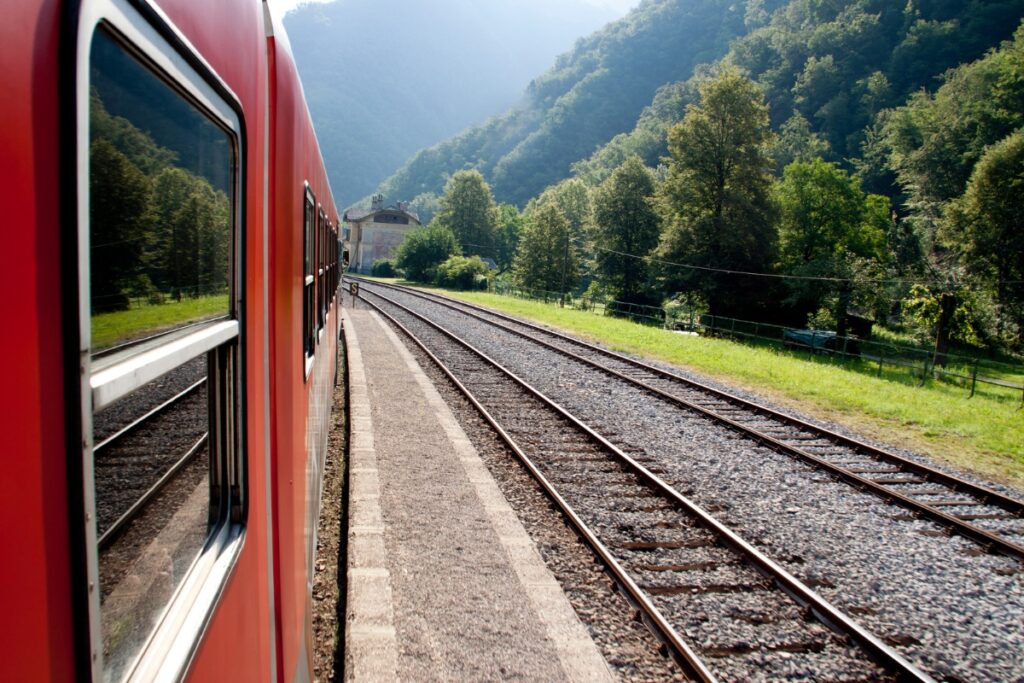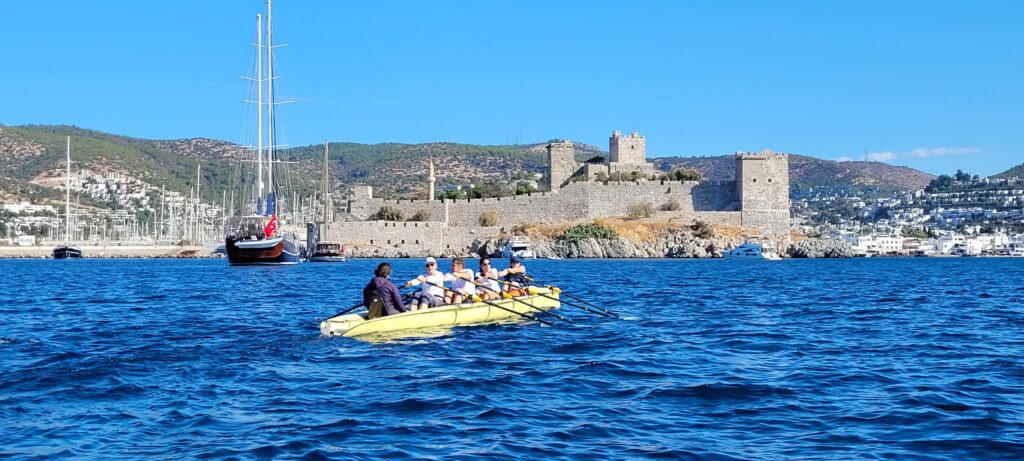
It seems appropriate that I started to write this blog post on the train from Koblenz, Germany to Helsingborg, Sweden. That was early October. I am finishing it now that I am back in the office, and COP27 has just started. It is time to talk about our carbon footprint and related commitments.
That train journey was about 13 hours. As I have for most of this European sojourn, and other trips this year and in 2021, I have chosen to use the train rather than fly between destinations. It is often more expensive, especially if there is a discount airline on the route. Sometimes there is the need for an overnight stay somewhere to make train connections work. It is definitely much longer. For example, Rome2Rio tells me it would have taken me about 6.5 hours if I took the train to Frankfurt, flew to Copenhagen and then train to Helsingborg. I am guessing that this would not have included the need to arrive at the airport at least 2 hours before the flight, plus waiting times for trains etc. So maybe 8.5 or 9 hours. In that context, this train journey is not so incredibly long. I had two changes, one of which was very tight – luckily no problems making it. The first stretch from Koblenz to Hamburg was especially enjoyable, with scenery to watch and the chance to more readily use my laptop than I would be able to in airports and while flying. The rest of the journey, while not as productive, was very pleasant. Overall, replacing flights with train travel has felt worth the extra costs and time. The Rail Europe website tells me that this meant 108.67 kg estimated CO2 saving from taking the train versus flying.
It is approaching a year since Rowing The World declared a climate emergency and signed the Glasgow Declaration on 17 December, 2021. We committed to several things including developing an action plan within one year, as well as reporting on our progress. Measuring our current carbon footprint is a pre-cursor to the action plan. Knowing what it is now will allow us to set targets to reduce that carbon footprint. Another commitment of the Glasgow Accord is to half emissions by 2030 and meet net zero as soon as possible before 2050.

What is our carbon footprint?
That is a good question. The short answer is that we don’t know yet. We are finding it hard to figure it out. It is a combination of having the learn a lot of background, develop spreadsheets and source information plus make many detailed decisions. Perhaps the biggest barrier is that there never seems to be enough time and there are always more immediate and pressing priorities. We know other small adventure travel tour operators have the same problems. Others have established their carbon footprint and have targets in their plans – impressive.
It sounds simple enough:
The calculation in itself is not that complex. What is more time-consuming is gathering the data needed to enter as input in the formulas. The main data you need to gather are:
For your customer:
• Flight segments used by your customer. This is information we provide our customer with when they travel, and travel companies are likely to have this information for their guests
• Number of nights slept during the trip and in what type of accommodation (e.g. hotel, eco-lodge, etc.)
• Local transportation used (bus, vehicle, train), number of kilometers
• Number and type of meals
For your company:Eric Balian of Terres d’Aventure
• Premises: type of premises used, size
• Energy bills
• Number of computers, screens, phones, etc..
• General overheads (printed paper, …)
• All staff transportation type and distance to come to the office
In fact that is a lot of information to pull together. Then we have to decide which calculator to use to convert that data into a measure of carbon, especially given the number of different countries that we operate in. The results sometimes seem bizarre. For example, our hotel carbon in Venice for the three day Vogalonga event is more than our seven day trip in Montreal & Eastern Townships with 1.5X more guests. Are Canadian hotels such amazing carbon reducers? I expect not, which makes you question the source for the estimates.
Ironically one of my favourite mantras is “an imperfect something is better than a perfect nothing”. Consistency in calculation methods year over year will become important going forward to be able to track progress and set appropriate targets each year. This is where we are getting lost in the weeds – wanting to establish a baseline which will make sense over time.
We have been looking for examples of calculations from other adventure travel companies. This also takes time and effort. Not only do you have to find those numbers but dig into them to see how the calculations were done. We do have an excellent calibration opportunity, however. Our partner in Turkey, Alper Ertubey of Hike and Sail, was an early signatory to the Glasgow Agreement. It has been helpful to speak with him. He has calculated the carbon footprint of our recent Turkey rowing trip. Our plan is for us to muddle through our own calculation and see how we compare.

Next Steps
Maybe the key words from the Glasgow Accord are about “taking urgent climate change action in tourism”. Yes, we want to measure, create a plan and then monitor progress. But more importantly in my opinion, we are already finding ways to reduce our carbon footprint.
Without even running the numbers, some observations become immediately obvious about our different types of rowing trips:
- Centre-based trips will have the lowest footprint, since no or limited land transportation during tour.
- Point to point will have a low footprint, since most movement on water and support boat and vehicle travel distances lower.
- Highest footprint from sampler type trips, especially if there is a lot of distance between the rowing locations requiring air travel or driving.
- Non-rowing activities likely add to the footprint, since they are rarely right at the rowing venues, so transportation is often needed.
- Having a support boat adds to the carbon footprint.
Where the guests come from and how they travel to the trip start is something that we do not control yet will contribute to the carbon footprint of each trip. Many companies do not seem to include this in their calculation. It is something that we will have to grapple with this once our baseline is established. It raises many questions on how to not only calculate these emissions, but then how to address reducing them. Research from the Adventure Travel Trade Association suggestions that travellers want to support climate measures.
The next step is to write the plan of how to reduce emissions. For example, on our planned Bay of Naples & Amalfi Coast trip, we will maximize the use of ferries to avoid using vans as transport. We are contemplating a new sampler style trip where we move from club to club by train – guests will have to pack light! We will also need to think about starting to buy carbon offsets. It is expensive and with so many things these days, seems to be rising rapidly in cost. Eric Balian Terre d’Aventures suggests 10% the first year and gradually increasing to reach 100%. Let’s run the numbers! We will let you know what we learn.


[…] the train between Koblenz, Germany and Helsingborg, Sweden – which is another story involving the carbon footprint of Rowing The World. The train made a stop in Kolding, Denmark, which I had not heard of before. Shortly after, an […]